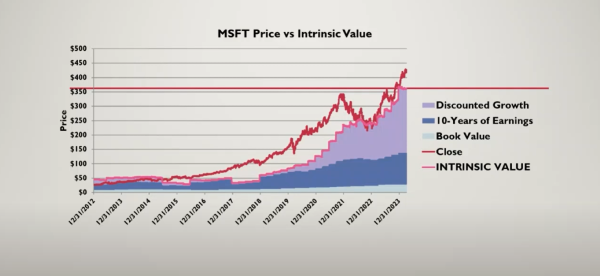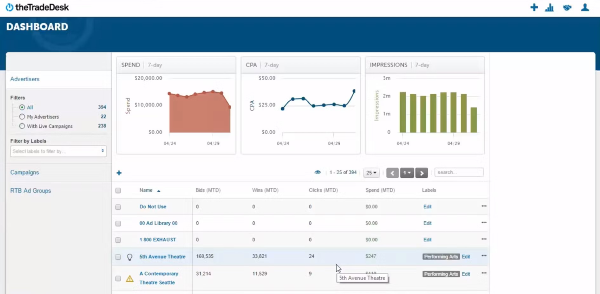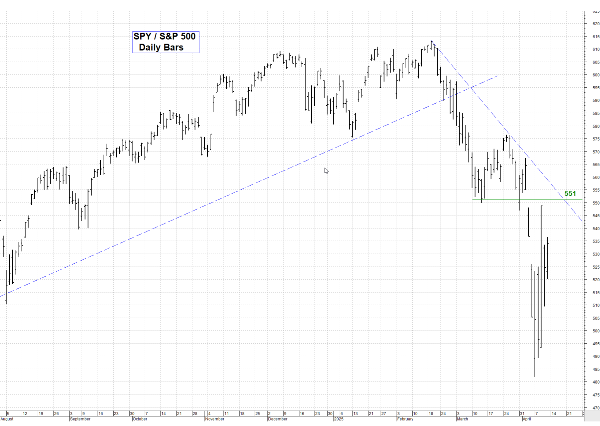What are Dividend Stocks?
Dividend stocks are shares of companies that regularly distribute a portion of their earnings to shareholders in the form of dividends. These payouts often serve as an incentive for investors seeking steady income, making dividend stocks a popular choice for passive income strategies. Dividends are typically paid quarterly but may also be issued annually, depending on the company’s policy. The amount of these payments is influenced by the company’s profitability and long-term growth potential. Investors value dividend stocks for their ability to provide consistent cash flow, even during market fluctuations.
There are several types of dividend stocks that cater to different investment goals. High-yield dividend stocks are known for offering significant payouts, making them attractive to income-focused investors, though they may carry higher risks. Blue-chip dividend stocks, on the other hand, represent shares of established, financially sound companies with a history of stable dividends. These stocks are often preferred by conservative investors seeking reliability. Additionally, dividend growth stocks emphasize gradual increases in payouts over time, appealing to those with long-term investment plans. Understanding these types can help investors tailor their portfolio to meet specific financial objectives.
Benefits of Dividend Stocks for Passive Income
Dividend stocks offer a reliable income stream, making them ideal for passive income strategies. Unlike stocks that rely solely on price appreciation for returns, dividend-paying stocks provide consistent payouts, often on a quarterly basis. This predictability allows investors to plan their finances more effectively and enjoy regular cash flow, regardless of market volatility. For retirees or income-focused investors, dividend stocks can serve as a stable financial cornerstone, ensuring a steady income source even in uncertain economic periods.
In addition to providing income, dividend stocks contribute to long-term wealth accumulation through the power of compounding. By reinvesting dividends into purchasing additional shares, investors can gradually grow their portfolios without having to inject new funds. This strategy not only enhances the overall value of investments over time but also leverages the benefits of diversification. Dividend-paying stocks span various industries, such as utilities, consumer goods, and healthcare, helping investors build a balanced portfolio. Furthermore, in some jurisdictions, dividend income may be taxed at favorable rates, adding an extra layer of financial efficiency for savvy investors. These combined benefits highlight why dividend stocks are a compelling choice for passive income seekers.
Risks to Consider
Investing in dividend stocks is not without its risks, especially during periods of market volatility. When the economy faces downturns, companies often prioritize financial stability over shareholder payouts. This can lead to dividend cuts or suspensions, leaving investors without their expected income stream. Market-sensitive industries, such as cyclical consumer goods or energy sectors, are particularly vulnerable during these turbulent times. For dividend investors, understanding how economic shifts influence company policies is crucial for mitigating risk and maintaining steady returns.
Stock selection presents another challenge in dividend investing. Choosing low-performing companies with unsustainable payout ratios or weak financial health can jeopardize the reliability of dividends. Investors must exercise caution, relying on comprehensive metrics to evaluate a company’s stability and growth potential. From declining revenue trends to high levels of debt, red flags should never be ignored. Proper research and due diligence are key in ensuring dividend-paying companies align with one’s investment objectives and risk tolerance.
How to Choose Dividend Stocks
Smart dividend investing begins with analyzing essential metrics. Dividend yield reflects the income potential relative to the stock’s price, while the payout ratio gauges the sustainability of the payments based on earnings. Additionally, the dividend growth rate signals how payouts have evolved over time, offering insights into the company’s commitment to rewarding shareholders. Together, these metrics provide a framework for selecting stocks that balance income generation and financial stability.
Industry trends and track records further guide dividend stock choices. Stable sectors like utilities and consumer goods often offer reliable payouts regardless of economic fluctuations, providing a level of consistency. Evaluating a company’s historical dividend performance is equally important, as consistent payouts over years or decades demonstrate financial strength and dependability. Companies with long-standing reputations for dividend stability, such as Dividend Aristocrats, can serve as benchmarks for quality investments. Combining these insights ensures informed decisions for a robust dividend portfolio.
Tips for Successful Passive Income Investing
Building a successful passive income portfolio with dividend stocks requires a strategic and disciplined approach. One key tip is to reinvest dividends using Dividend Reinvestment Plans (DRIPs). These plans allow you to automatically use dividend payouts to purchase additional shares, compounding your wealth over time without additional out-of-pocket investments. Maintaining a balanced portfolio is equally important—combining high-yield dividend stocks for immediate income with growth-oriented dividend stocks to benefit from long-term payout increases can provide both stability and future wealth expansion. Adopting a long-term perspective ensures gradual accumulation, as reinvested dividends and capital gains work together to enhance your financial goals. By focusing on reinvestment, diversification, and patience, you can create a resilient and rewarding dividend income strategy.
Conclusion
Dividend stocks can be a powerful tool for generating passive income and building long-term wealth when approached strategically. By understanding their potential benefits and risks, such as market volatility and the importance of diversification, investors can make informed decisions that align with their financial goals. Careful stock selection using key metrics like dividend yield, payout ratio, and track record ensures a balanced and resilient portfolio. Additionally, leveraging Dividend Reinvestment Plans (DRIPs) and maintaining a long-term perspective can amplify the compounding effects of dividends over time. Whether you're a seasoned investor or just starting your journey, dividend stocks offer a compelling pathway to achieving financial independence and steady income streams. Begin exploring this rewarding investment strategy today!































What are Dividend Stocks?
Dividend stocks are shares of companies that regularly distribute a portion of their earnings to shareholders in the form of dividends. These payouts often serve as an incentive for investors seeking steady income, making dividend stocks a popular choice for passive income strategies. Dividends are typically paid quarterly but may also be issued annually, depending on the company’s policy. The amount of these payments is influenced by the company’s profitability and long-term growth potential. Investors value dividend stocks for their ability to provide consistent cash flow, even during market fluctuations.
There are several types of dividend stocks that cater to different investment goals. High-yield dividend stocks are known for offering significant payouts, making them attractive to income-focused investors, though they may carry higher risks. Blue-chip dividend stocks, on the other hand, represent shares of established, financially sound companies with a history of stable dividends. These stocks are often preferred by conservative investors seeking reliability. Additionally, dividend growth stocks emphasize gradual increases in payouts over time, appealing to those with long-term investment plans. Understanding these types can help investors tailor their portfolio to meet specific financial objectives.
Benefits of Dividend Stocks for Passive Income
Dividend stocks offer a reliable income stream, making them ideal for passive income strategies. Unlike stocks that rely solely on price appreciation for returns, dividend-paying stocks provide consistent payouts, often on a quarterly basis. This predictability allows investors to plan their finances more effectively and enjoy regular cash flow, regardless of market volatility. For retirees or income-focused investors, dividend stocks can serve as a stable financial cornerstone, ensuring a steady income source even in uncertain economic periods.
In addition to providing income, dividend stocks contribute to long-term wealth accumulation through the power of compounding. By reinvesting dividends into purchasing additional shares, investors can gradually grow their portfolios without having to inject new funds. This strategy not only enhances the overall value of investments over time but also leverages the benefits of diversification. Dividend-paying stocks span various industries, such as utilities, consumer goods, and healthcare, helping investors build a balanced portfolio. Furthermore, in some jurisdictions, dividend income may be taxed at favorable rates, adding an extra layer of financial efficiency for savvy investors. These combined benefits highlight why dividend stocks are a compelling choice for passive income seekers.
Risks to Consider
Investing in dividend stocks is not without its risks, especially during periods of market volatility. When the economy faces downturns, companies often prioritize financial stability over shareholder payouts. This can lead to dividend cuts or suspensions, leaving investors without their expected income stream. Market-sensitive industries, such as cyclical consumer goods or energy sectors, are particularly vulnerable during these turbulent times. For dividend investors, understanding how economic shifts influence company policies is crucial for mitigating risk and maintaining steady returns. Stock selection presents another challenge in dividend investing. Choosing low-performing companies with unsustainable payout ratios or weak financial health can jeopardize the reliability of dividends. Investors must exercise caution, relying on comprehensive metrics to evaluate a company’s stability and growth potential. From declining revenue trends to high levels of debt, red flags should never be ignored. Proper research and due diligence are key in ensuring dividend-paying companies align with one’s investment objectives and risk tolerance.
How to Choose Dividend Stocks
Smart dividend investing begins with analyzing essential metrics. Dividend yield reflects the income potential relative to the stock’s price, while the payout ratio gauges the sustainability of the payments based on earnings. Additionally, the dividend growth rate signals how payouts have evolved over time, offering insights into the company’s commitment to rewarding shareholders. Together, these metrics provide a framework for selecting stocks that balance income generation and financial stability. Industry trends and track records further guide dividend stock choices. Stable sectors like utilities and consumer goods often offer reliable payouts regardless of economic fluctuations, providing a level of consistency. Evaluating a company’s historical dividend performance is equally important, as consistent payouts over years or decades demonstrate financial strength and dependability. Companies with long-standing reputations for dividend stability, such as Dividend Aristocrats, can serve as benchmarks for quality investments. Combining these insights ensures informed decisions for a robust dividend portfolio.
Tips for Successful Passive Income Investing
Building a successful passive income portfolio with dividend stocks requires a strategic and disciplined approach. One key tip is to reinvest dividends using Dividend Reinvestment Plans (DRIPs). These plans allow you to automatically use dividend payouts to purchase additional shares, compounding your wealth over time without additional out-of-pocket investments. Maintaining a balanced portfolio is equally important—combining high-yield dividend stocks for immediate income with growth-oriented dividend stocks to benefit from long-term payout increases can provide both stability and future wealth expansion. Adopting a long-term perspective ensures gradual accumulation, as reinvested dividends and capital gains work together to enhance your financial goals. By focusing on reinvestment, diversification, and patience, you can create a resilient and rewarding dividend income strategy.
Conclusion
Dividend stocks can be a powerful tool for generating passive income and building long-term wealth when approached strategically. By understanding their potential benefits and risks, such as market volatility and the importance of diversification, investors can make informed decisions that align with their financial goals. Careful stock selection using key metrics like dividend yield, payout ratio, and track record ensures a balanced and resilient portfolio. Additionally, leveraging Dividend Reinvestment Plans (DRIPs) and maintaining a long-term perspective can amplify the compounding effects of dividends over time. Whether you're a seasoned investor or just starting your journey, dividend stocks offer a compelling pathway to achieving financial independence and steady income streams. Begin exploring this rewarding investment strategy today!